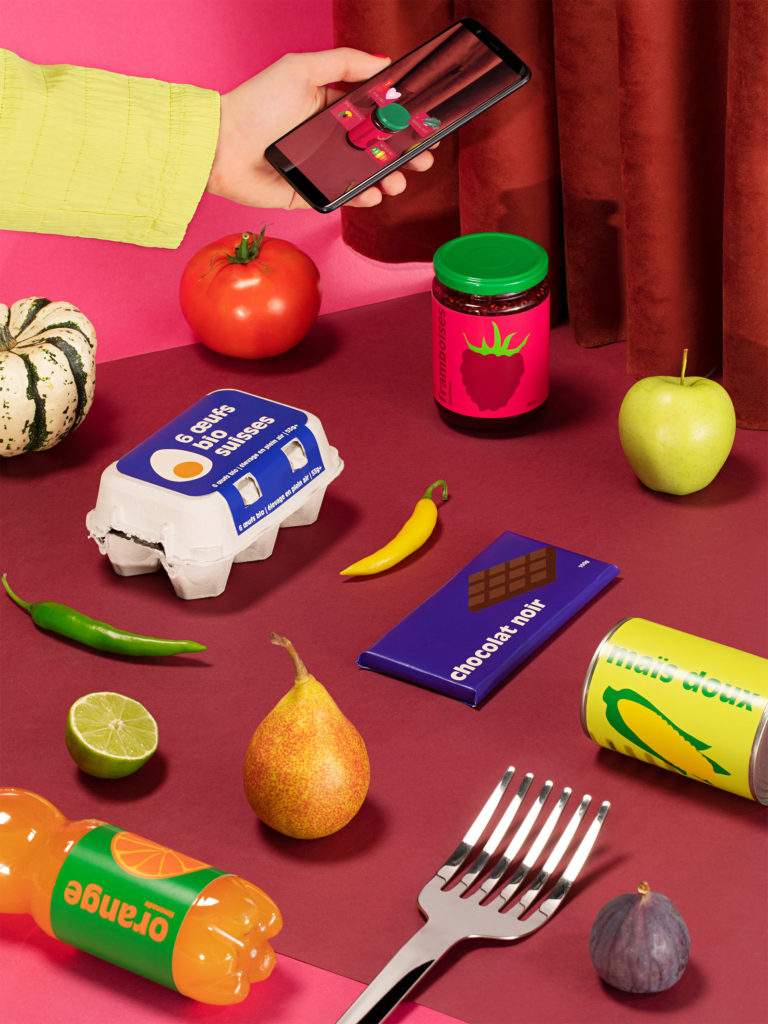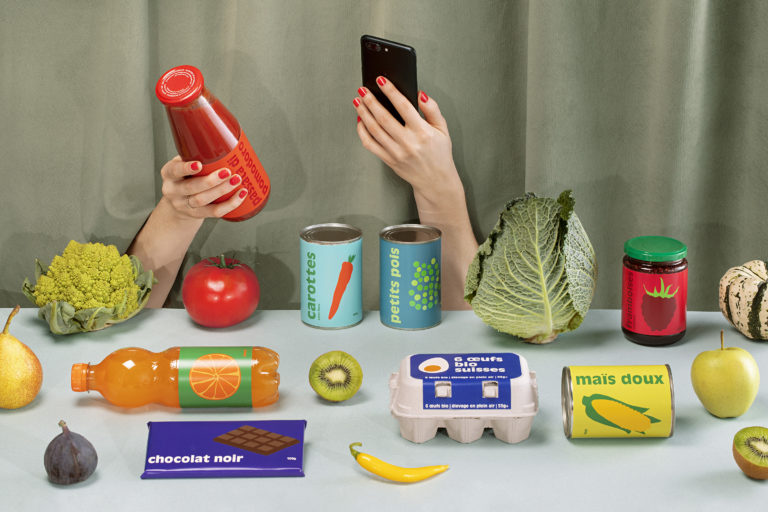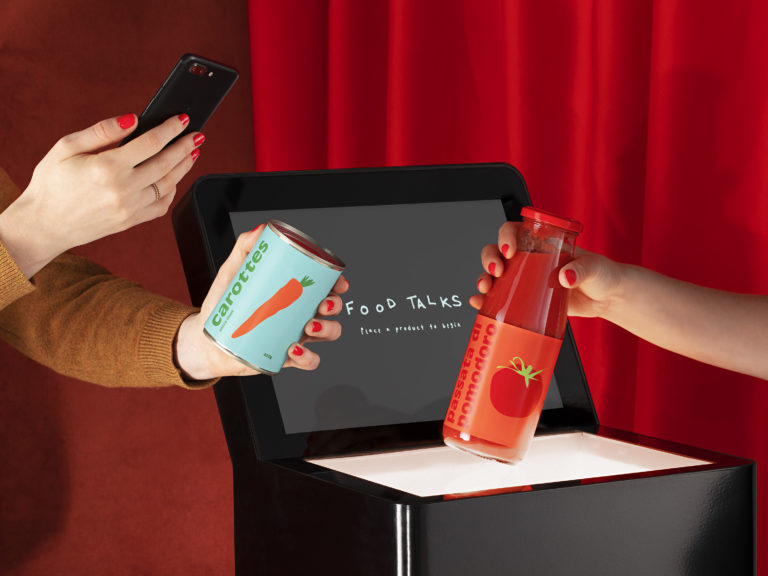Food Talks
How can augmented reality increase the understanding of nutritional and environmental data around food products?
What do we really eat? Where does our food come from? Food Talks explores how augmented reality (AR) can be used to enhance information around food in a busy retail environment. Whilst other solutions investigate technical issues, Food Talks focuses on content perception. It demonstrates how AR can create meaningful relationships between food products and their immaterial value.
Customers are asking for more detail about where food has come from, its environmental and social impact as well as its compatibility with specific diets or allergies. Personalized nutrition is also a major trend. But how can relevant information be shared with the consumers? Packaging is already oversaturated, buyers are mostly in a hurry, and the retail environment does not provide an intimate context for interacting with sensitive data related to our health.
In Food Talks, the EPFL+ECAL Lab looked to rethink the use of augmented reality in this context. With a consortium of actors from the food industry, it investigated the user experience around food labelling in real-life scenarios.
Rather than promoting just another tech-driven proposition, the research project took a two-step approach. The first phase engages large audiences in the crowded and stressful retail environment. Consumers experience the augmentation in a natural way, without the need to hold a device in their hands. In order to fit seamlessly into the context, interactions are based on similar gestures to those used in self-scanning or weighing. Tests conducted in real shopping environments showed that people remember the augmented content and are not distracted by the AR technology.
The second step opens up advanced interactions with personalised interfaces on a mobile app. Use is focused on situations out of the shop, such as at home, where stress is lower and trust is higher. As people tend to buy the same products again and again, the given information can have a strong influence on customer’s choice. Tests with validated user experience protocols show significant results in favour of augmented reality.
Not only does this research work reveal the potential of AR as a credible medium in the food industry, it also provides specific design guidelines for how to do so.
Direction
Research Assistant
Supervision
Software Engineering
Photography Credits
© EPFL+ECAL Lab / Calypso Mahieu




